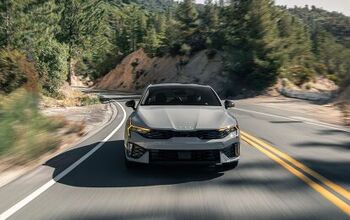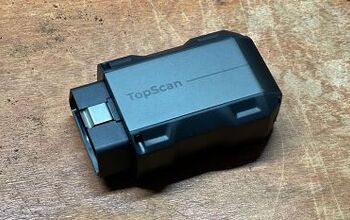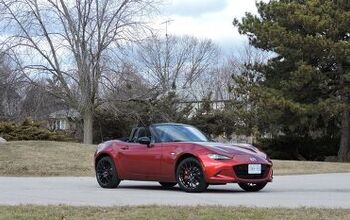2014 Acura ILX Hybrid Review

Looking back over more than a decade of automotive history in North America, it’s easy to remember when hybrids were reserved for fringe buyers: early adopters.
FAST FACTS
| 1. Hybrid drivetrain offers 111 hp and 127 lb-ft of torque. |
| 2. EPA rated 39 MPG in the city, 38 MPG on the highway and 38 MPG combined. |
| 3. $29,795 to start and climbs to $35,295 with the Tech Package. |
| 4. Cargo capacity is limited to 10 cubic feet. |
Those early hybrids called for a special kind of buyer; the same person who sweats over the LEED rating their house has.
That isn’t the case today. The California government doesn’t even issue HOV stickers to hybrids any more. Now, electric cars are in vogue and hybrids are common like ketchup around a dinner table. Here’s the trouble: as with ketchup, hybrids are not all created equal. So where does the ILX Hybrid fall?
As you might already know, the ILX is based on the Honda Civic. The suspension components, chassis and drivetrain are all shared, as is the manufacturing facility. Makes sense.
Body Hides Humble Beginnings, Hints at Hybrid
What also makes sense is how far Acura has gone to disguise the ILX. Aside from its size, the sheet metal doesn’t give its familiar similarities away. Like an Ivy-leaguer with a trailer park past, the car masks its roots to outsiders.
Get the Flash Player to see this player.
The silver beak, creases running over its body and taillights all carry mature aesthetics associated with current Acura vehicles. It stands as further emphasis that passion-driven products like the Integra Type R are six-feet deep and out of reach.
A “hybrid” badge distinguishes the car’s tendency toward inconspicuous fuel consumption. The standard equipment list also outfits the car with rather tiny looking 16-inch alloy wheels.
Cabin Borders on Being Too Plain
Once again, the car conceals most of its Civic roots with an adaptation of the dashboard style found in the larger Acura products. The stylistic choice could hint at the direction some expect the ILX to take: a replacement for the older and more upmarket TSX.
Despite that, the car is still stuck on the lower end of premium thanks in part to the seats. They’re upholstered in leather, but only if you pay for the “Tech Package.” Even though they’re branded as “sport” seats, the side bolstering is minimal and they don’t hug you well while cornering. The material also doesn’t feel particularly rich.
Other areas are actually exceptional. For example, the infotainment screen is nestled far into the dash, making it easy to read in bright light. The center stack controls are straightforward, and driver ergonomics are splendid.
The cup holders and center arm rest are positioned to save space while allowing the driver to comfortably rest both arms. Buttons on the center stack and steering wheel are easily within reach.
Legroom is actually more generous in the ILX than its most direct competitor: the Lexus CT200h. The front seats offer a little more than 42 inches of leg space while the rear seats have 34. That’s actually less than the platform-sharing Civic.
This is a sedan, so of course it won’t have the same cargo capacity as the hatchback Lexus product mentioned above. Instead you’ll find a scant 10 cubic feet of space – hybrid models sacrifice 2.4 cubic feet to carry the extra drivetrain gear.
Driving Dynamics Dull but Predictable
A 1.5-liter four-cylinder engine and an electric motor to assist the little gas powerplant makes for sluggish starts. Likely due to the extra components located at the car’s rear, weight distribution is actually more even on the hybrid model than gasoline-only versions.
Stepping on the gas is boring, yes, but the car feels stable in a highway cloverleaf to the point where the seats lack of bolstering is especially apparent. You’re more likely to slide around than the car is.
Hybrid customers don’t typically demand spirited acceleration, so the car’s lack of athleticism — while worth noting — is hardly a valid criticism. The CVT can be annoying at first, buy you’ll get used to it pretty quickly.
Acura also deserves recognition for how quiet the car’s cabin is. Highway noise is hushed, conversations are easy to carry on and you won’t need to turn the stereo up at higher speeds.
IMA Does it Again… Or Doesn’t
All hybrids are not created equally, and Honda’s Integrated Motor Assist (IMA) system sits on the low end of that spectrum. It can’t run on electricity alone and is more sensitive to driver behavior.
EPA estimates suggest the car should offer 39 MPG in the city and 38 on the highway for a combined 38 total.
The problem is that Honda’s system isn’t very advanced and won’t be able to deliver those numbers without a careful driver. During feather-footed trips with faithfully gentle acceleration and conservative throttle use, the car reported 33.6 mpg in the city. Driving at the speed of traffic, those numbers fell to about 24.
Smooth highway travel will be able to return the stated fuel economy claims, but the in-city fuel consumption was a major disappointment. People who live in urban areas don’t always have the luxury of driving very slowly, and with this car they won’t enjoy the fuel economy they will probably expect.
Oh That Price
Buying a hybridized ILX isn’t cheap, but the $29,795 starting MSRP excludes the tech package and many features that really shouldn’t be missing at that price. Most notably, the base ILX Hybrid doesn’t come with leather seat upholstery. That, along with navigation, weather and traffic updates, an improved stereo all come with the pricey option pack. Checking that box bumps the price up to $35,295 including delivery.
The Verdict
Discuss this story at our Acura Forums
That’s nuts. At least until you realize that it’s right in line with the Lexus product. It still doesn’t justify the roughly $10,000 Acura asks over the Civic hybrid, which is also more significantly more fuel efficient.
Choices are indeed limited for buyers who insist on owning a Japanese entry-level hybrid luxury compact car. Can’t stand hatchbacks? Get ready to pay a hefty premium for your preference.
Owning an ILX hybrid in the city doesn’t make any sense. Don’t do it. Traffic congestion will keep you from enjoying the car’s potential fuel economy on most trips. On the other hand, highway commuters who are keen on this car’s strange little niche might appreciate escaping stereotypical hybrid style.
The only thing less worthwhile than owning an ILX Hybrid without the tech package is paying to get it.
LOVE IT
- Handsome sheet metal
- Ergonomic cabin
- Easy-to-understand infotainment system
LEAVE IT
- Aging hybrid system is outdated
- Outrageously priced tech package
- Cloth seats in the base model are offensive

Luke is an energetic automotive journalist who spends his time covering industry news and crawling the internet for the latest breaking story. When he isn't in the office, Luke can be found obsessively browsing used car listings, drinking scotch at his favorite bar and dreaming of what to drive next, though the list grows a lot faster than his bank account. He's always on <A title="@lukevandezande on Twitter" href="http://twitter.com/lukevandezande">Twitter</A> looking for a good car conversation. Find Luke on <A title="@lukevandezande on Twitter" href="http://twitter.com/lukevandezande">Twitter</A> and <A title="Luke on Google+" href="http://plus.google.com/112531385961538774338?rel=author">Google+</A>.
More by Luke Vandezande































Comments
Join the conversation